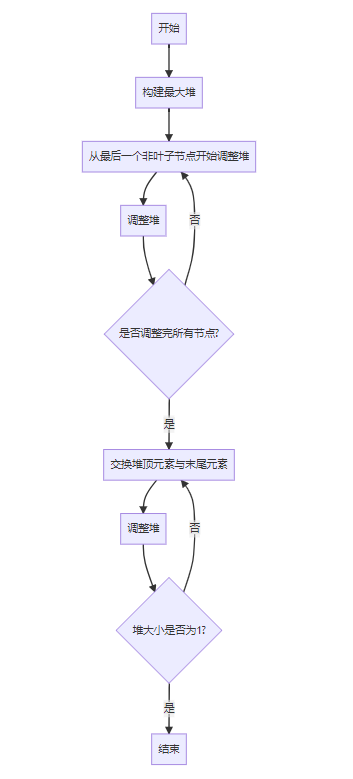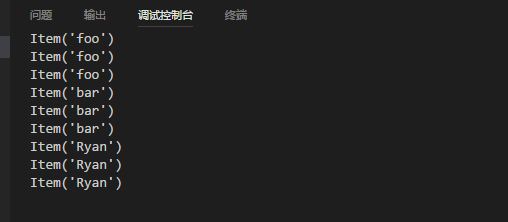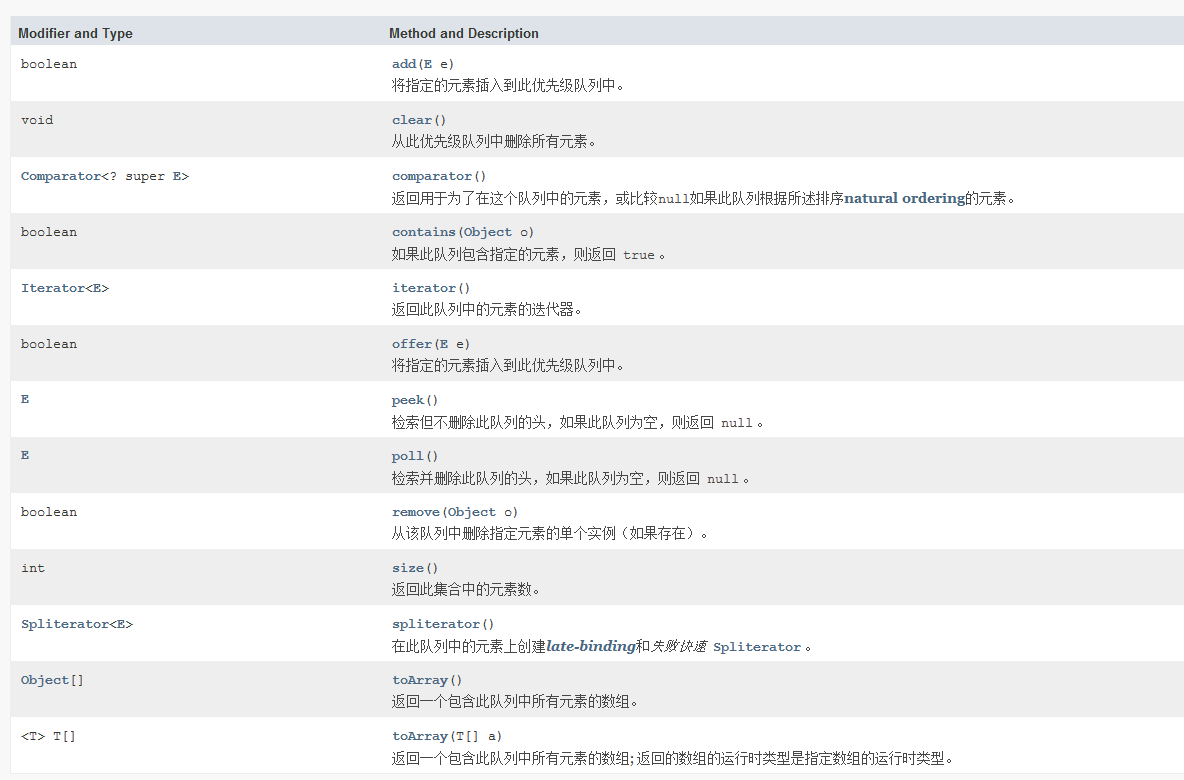Python中的堆排序与优先队列
Python中的堆排序与优先队列

对数据进行排序是一个很常见的需求,但有时候我们并不需要对完整的数据进行排序,只需要排前几的数据,也就是经典的 Top-K 问题。
Top-K 问题的经典解法有两种:一种是脱胎于快速排序(Quick Sort)的快速选择(Quick Select)算法,核心思路是在每一次Partion操作后下一次递归只操作前K项数据。另一种是基于堆排序的方法。
Python 中有两个标准库可以原生的支持堆排序(优先队列),分别是heapq和PriorityQueue(queue)。
heapq
heapq标准库提供了一些工具函数用来对list对象实现二叉堆的各种操作(就地修改list对象)。简单的用法如下:
建堆
123456 | import heapq# 可以用过random.shuffle函数创造乱序数组arr = [4, 0, 3, 1, 6, 5, 9, 7, 8, 2]heapq.heapify(arr)assert arr == [0, 1, 3, 4, 2, 5, 9, 7, 8, 6] |
|---|
获取堆顶元素
12 | assert heapq.heappop(arr) == 0assert arr == [1, 2, 3, 4, 6, 5, 9, 7, 8] |
|---|
插入新元素
12 | heapq.heappush(arr, 11)assert arr == [1, 2, 3, 4, 6, 5, 9, 7, 8, 11] |
|---|
heapq也提供了直接获取nlargest和nsmallest函数,并且这两个函数并不会就地修改原数据。
1234 | arr = [4, 0, 3, 1, 6, 5, 9, 7, 8, 2]assert heapq.nlargest(5, arr) == [9, 8, 7, 6, 5]assert arr == [4, 0, 3, 1, 6, 5, 9, 7, 8, 2]assert heapq.nsmallest(5, arr) == [0, 1, 2, 3, 4] |
|---|
queue.PriorityQueue
queue标准库为 Python 代码提供了原生线程安全的队列实现。queue.PriorityQueue则是 Python 原生的优先队列实现,相比heapq有着更直观易用的接口。
创建优先队列
12345678 | from queue import PriorityQueuepq = PriorityQueue()arr = [4, 0, 3, 1, 6, 5, 9, 7, 8, 2]for num in arr: pq.put(num) |
|---|
获取队首元素
12 | while not pq.empty(): assert pq.get() == 0 |
|---|
对比
heapq标准库是专门用来做堆排序相关操作的,而PriorityQueue类毕竟继承于queue.Queue,适用于多线程通信场景。两者的效率还是有着不小差距的。
我们以 LeetCode 973(最接近原点的 K 个点)为例,分别用heapq和PriorityQueue实现,比较一下二者的运行效率。
题目描述
973. 最接近原点的 K 个点
我们有一个由平面上的点组成的列表 points。需要从中找出 K 个距离原点 (0, 0) 最近的点。
(这里,平面上两点之间的距离是欧几里德距离。)
你可以按任何顺序返回答案。除了点坐标的顺序之外,答案确保是唯一的。
示例 1
输入:points = [[1,3],[-2,2]], K = 1 输出:[[-2,2]] 解释: (1, 3) 和原点之间的距离为 sqrt(10), (-2, 2) 和原点之间的距离为 sqrt(8), 由于 sqrt(8) < sqrt(10),(-2, 2) 离原点更近。 我们只需要距离原点最近的 K = 1 个点,所以答案就是 [[-2,2]]。
示例 2
输入:points = [[3,3],[5,-1],[-2,4]], K = 2 输出:[[3,3],[-2,4]] (答案 [[-2,4],[3,3]] 也会被接受。)
提示:
1 <= K <= points.length <= 10000 -10000 < points[i][0] < 10000 -10000 < points[i][1] < 10000
生成测试数据
12345 | from random import randintdef genPoints(n:int = 100): return [(randint(0, 100), randint(0, 100)) for _ in range(n)]points = genPoints(1_0000)less_points = genPoints(100) |
|---|
heapq实现
123456789101112131415161718 | import heapqfrom typing import Listdef distance(point: List[int]): return point[0] ** 2 + point[1] ** 2class Solution: def kClosest(self, points: List[List[int]], K: int) -> List[List[int]]: distances = [(distance(point), point) for point in points] return [e[1] for e in heapq.nsmallest(K, distances)]solution = Solution()%timeit solution.kClosest(points, 100)# 6.79 ms ± 181 µs per loop (mean ± std. dev. of 7 runs, 100 loops each) |
|---|
PriorityQueue实现
12345678910111213141516171819202122 | from queue import PriorityQueuefrom typing import Listdef distance(point: List[int]): return point[0] ** 2 + point[1] ** 2class Solution: def kClosest(self, points: List[List[int]], K: int) -> List[List[int]]: pq = PriorityQueue() for point in points: pq.put((distance(point), point), block=False) ret = [] while not pq.empty(): ret.append(pq.get()[1]) return retsolution = Solution()%timeit solution.kClosest(points,100)# 52.2 ms ± 1.26 ms per loop (mean ± std. dev. of 7 runs, 10 loops each) |
|---|
我们可以看到heapq版本比PriorityQueue版本快接近一个数量级,并且代码也更精简。
这也说明了我们要在合适的地方使用合适的工具。
本文系转载,前往查看
如有侵权,请联系 cloudcommunity@tencent.com 删除。
本文系转载,前往查看
如有侵权,请联系 cloudcommunity@tencent.com 删除。
- heapq
- 建堆
- 获取堆顶元素
- 插入新元素
- queue.PriorityQueue
- 创建优先队列
- 获取队首元素
- 对比
- 题目描述
- 973. 最接近原点的 K 个点
- 生成测试数据
- heapq实现
- PriorityQueue实现
- 题目描述

腾讯云开发者

扫码关注腾讯云开发者
领取腾讯云代金券
Copyright © 2013 - 2025 Tencent Cloud. All Rights Reserved. 腾讯云 版权所有
深圳市腾讯计算机系统有限公司 ICP备案/许可证号:粤B2-20090059 深公网安备号 44030502008569
腾讯云计算(北京)有限责任公司 京ICP证150476号 | 京ICP备11018762号 | 京公网安备号11010802020287
Copyright © 2013 - 2025 Tencent Cloud.
All Rights Reserved. 腾讯云 版权所有











